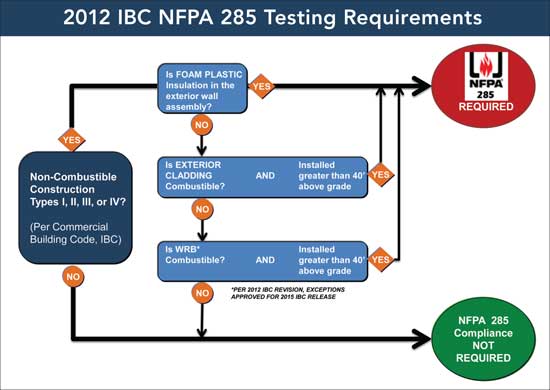Navigating Wall Assembly Fire Testing
It seems that these newer developments were, in part, driven by increasing concerns about life safety issues in high-rise structures. For example, according to NFPA research, from 2005 to 2009, an estimated 15,700 annually reported fires in high-rise buildings resulted in an average of 53 civilian deaths, 546 civilian injuries, and $235 million in direct property damage per year.
In addition, a number of building fires in the U.S. and China in 2010 proved that a small ignition source can rapidly spread to engulf the entire exterior of a building. Of course, this is particularly dangerous in high-rise buildings with limited rescue and evacuation capabilities.
Although the process of states adopting the latest version of the IBC will take time, and often states and local jurisdictions choose not to adopt the model code in its entirety, but rather use it as a basis for developing their codes, experts anticipate that the issue of designing and specifying NFPA 285-compliant wall assemblies is becoming more critical.
Buyer Beware
While some manufacturers and associations have been quite proactive in terms of testing their wall assemblies in-house to ensure NFPA 285 compliance, other products have only begun showing up in wall assemblies in recent years and have not been tested together with many component variations.
“So now NFPA 285 is rearing its ugly head for some, and architects are frustrated that they can't always design wall assemblies the way they want to as not all products pass this test,” points out Beitel.
Furthermore, Tracy (Golinveaux) Vecchiarelli, associate fire protection engineer, National Fire Protection Association, Quincy, Massachusetts, points out that NFPA 285 is a full assembly test. “This means that all of the wall components need to be tested together and then the entire assembly is given credit for passing the test. However, the individual components of the wall cannot be considered 'compliant' just because they were part of a tested assembly,” she explains.
 |
| This flowchart can help designers determine whether their wall assembly requires NFPA 285 testing. |
|
Image courtesy of DuPont Building Innovations |









